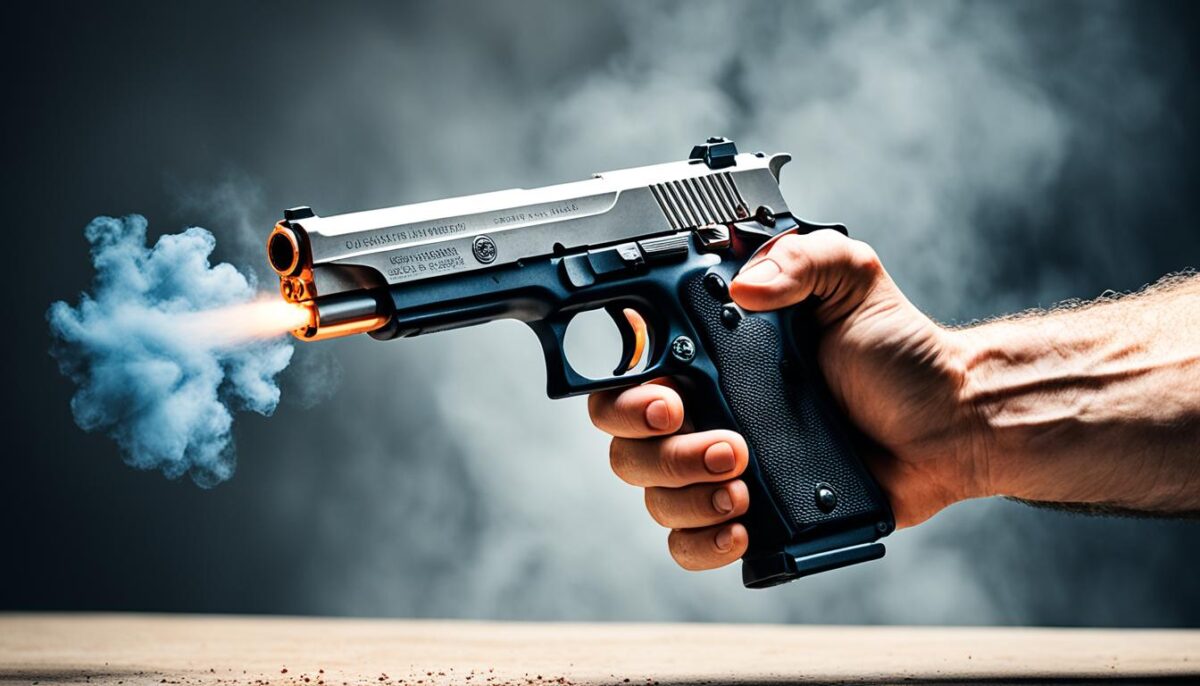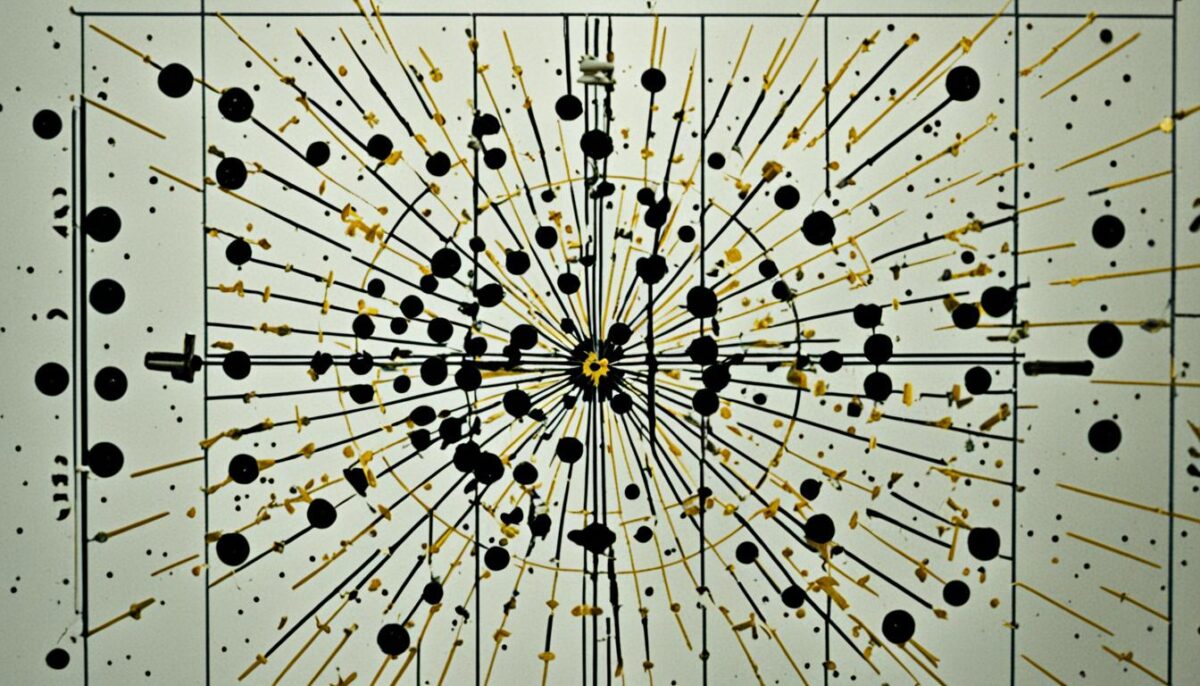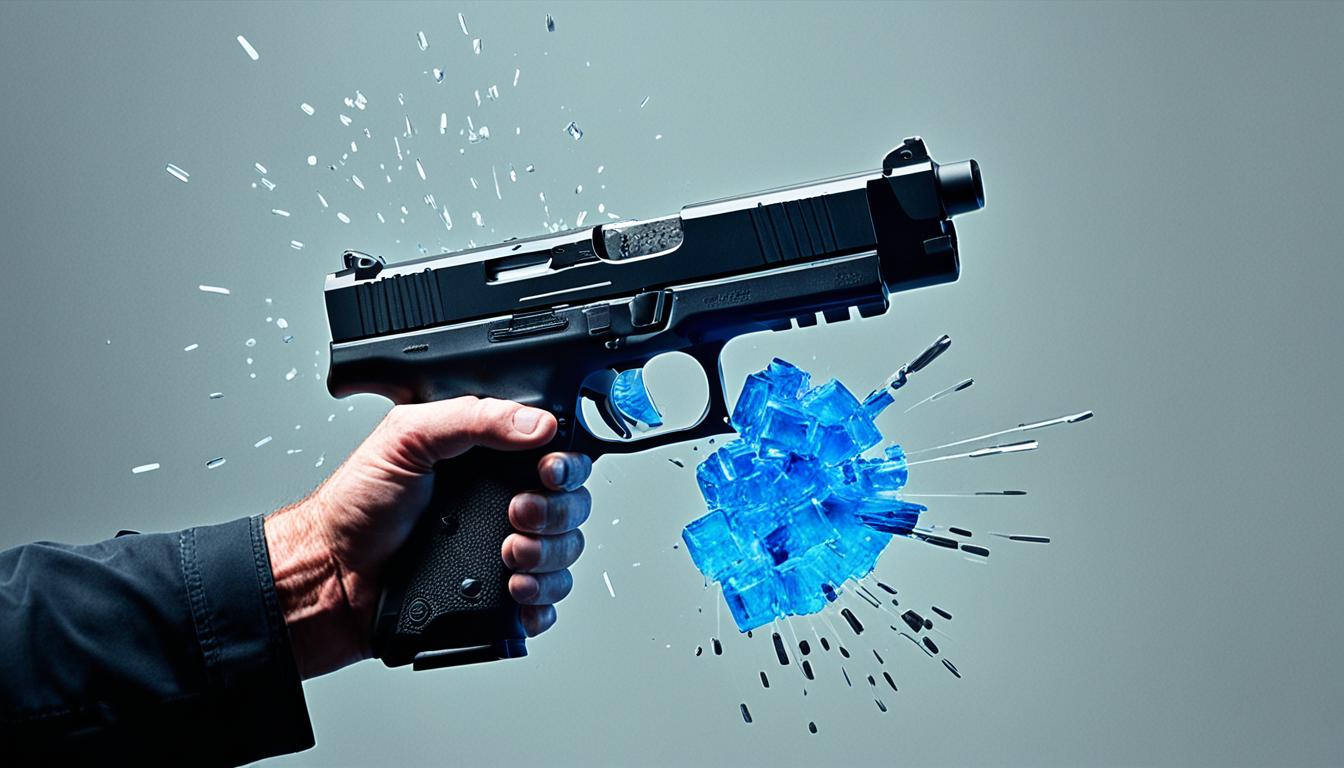Welcome to the first installment of our comprehensive series on handgun stopping power. In this section, we will take a closer look at the factors that determine a pistol’s effectiveness in critical situations. Whether you’re a seasoned firearm enthusiast or a novice looking to learn more, this series will provide valuable insights into the world of self-defense handguns.
When it comes to personal safety, understanding handgun stopping power is of utmost importance. The ability of a pistol to stop a threat quickly and effectively can mean the difference between life and death in a life-threatening encounter.
Throughout this series, we will explore the concept of handgun stopping power and delve into the various factors that contribute to a pistol’s effectiveness. From caliber and bullet design to velocity and shot placement, we will leave no stone unturned in our pursuit of knowledge.
So join us as we embark on this journey of discovery, debunking myths and uncovering the truth behind handgun stopping power.
Understanding Handgun Stopping Power
When it comes to self-defense, understanding the concept of handgun stopping power is crucial. The effectiveness of pistols in critical situations can be influenced by several factors. In this section, we will explore these factors in detail to help you make informed decisions about the handgun you choose.
One significant factor that affects handgun stopping power is the caliber. Many people believe that a larger caliber automatically means more stopping power, but this is not always the case. While caliber does play a role, it is just one piece of the puzzle. Other factors such as bullet design, velocity, and shot placement also contribute to a pistol’s effectiveness.

When it comes to caliber, it’s essential to understand that different calibers have their pros and cons. While a larger caliber may have the potential for greater energy transfer, it also results in increased recoil and reduced magazine capacity. On the other hand, a smaller caliber offers reduced recoil and increased magazine capacity but may lack sufficient stopping power in certain situations.
Bullet design is another critical factor to consider. The design of the bullet can affect its ability to penetrate and expand upon impact. Hollow point bullets, for example, are designed to expand upon impact and cause significant tissue damage, which can enhance stopping power.
The velocity at which a bullet travels also plays a role in its effectiveness. Higher velocities result in deeper penetration and greater tissue disruption. However, the downside of high velocity is increased muzzle blast and recoil, making follow-up shots more challenging.
In addition to these factors, shot placement is perhaps the most critical consideration when it comes to handgun stopping power. A well-placed shot to vital organs or other incapacitating areas can quickly neutralize a threat, regardless of the caliber or bullet design.
Understanding the various factors that contribute to handgun stopping power is essential for choosing the right firearm for self-defense. By considering caliber, bullet design, velocity, and shot placement, you can make an informed decision and maximize your chances of effectively stopping a threat.
Caliber: Debunking the Myth
When it comes to handgun stopping power, one of the most persistent myths is that caliber alone determines a pistol’s effectiveness. Many believe that a larger caliber equates to superior stopping power, while smaller calibers are inadequate for self-defense situations. However, this belief is not entirely accurate.
To understand the true impact of handgun caliber on stopping power, we must consider a combination of factors. While caliber certainly plays a role, it is just one piece of the puzzle. Bullet design, velocity, and shot placement are equally important in determining a pistol’s effectiveness.
Let’s take a closer look at different handgun calibers and their pros and cons. While larger calibers may offer greater energy and penetration, they also come with increased recoil and muzzle blast, which can affect accuracy and follow-up shots. On the other hand, smaller calibers may be more controllable and allow for faster follow-up shots, but they may lack the same level of stopping power as their larger counterparts.
It’s important to note that shot placement is critical when it comes to stopping an assailant. Regardless of the caliber, a well-placed shot to vital organs or the central nervous system is more likely to incapacitate an attacker than a poorly placed shot with a larger caliber.
To further illustrate these points, let’s take a closer look at the most common handgun calibers:
| Caliber | Pros | Cons |
|---|---|---|
| 9mm | – High capacity\n- Low recoil\n- Wide variety of ammunition | – May lack penetration compared to larger calibers\n- Debate over stopping power effectiveness |
| .45 ACP | – Larger bullet diameter\n- Favorable wound characteristics | – Higher recoil\n- Lower magazine capacity |
| .380 ACP | – Compact and concealable\n- Moderate recoil | – Limited stopping power compared to larger calibers |
| .38 Special | – Wide availability\n- Low recoil | – Limited capacity compared to semi-automatic pistols |
As you can see, each caliber has its own set of advantages and trade-offs. It is crucial to choose a caliber that you can handle effectively, ensuring accurate shot placement under stress.
Remember, handgun stopping power is not solely determined by caliber but rather a combination of factors, including bullet design, velocity, and shot placement. It’s essential to prioritize training, practice, and choosing a firearm that suits your needs and abilities.

The Importance of Shot Placement
When it comes to maximizing handgun stopping power, shot placement is paramount. Remember, it’s not just about the caliber or bullet design, but rather where those rounds land. By aiming for the vital organs, you can significantly increase the chances of immediate incapacitation and stopping the threat.
In any self-defense situation, pinpoint accuracy is crucial. The vital organs, such as the heart, lungs, or brain, are the primary targets to aim for. Striking these areas will cause significant damage and disrupt the attacker’s bodily functions, effectively neutralizing their ability to continue posing a threat.
Improving your accuracy and precision can be achieved through consistent practice and training. By mastering your grip, stance, and trigger control, you’ll be better equipped to deliver accurate shots on target. Additionally, familiarizing yourself with the anatomy of the human body and understanding the vulnerability of vital organs will further enhance your shot placement skills.
Remember, the goal is to incapacitate the threat as quickly as possible. By focusing on shot placement and targeting the vital organs, you can maximize handgun stopping power and ensure your safety in critical situations.

